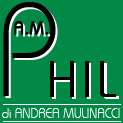Antigua
The history of Antigua and Barbuda can be divided into three distinct eras. In the first, the islands were inhabited by three successive Amerindian societies. The islands were overlooked in the first wave of European colonization of the Americas, but were occupied by England in 1632. Under British control, the islands saw an influx of both British and African slaves. In 1981, the islands were granted independence from the United Kingdom, creating the modern state of Antigua and Barbuda.
Christopher Columbus sighted the islands of Antigua and Barbuda in 1493 during his second voyage, giving the larger one the name of Santa Maria de la Antigua. However, the first attempts by Europeans to colonize the islands failed due to the excellent defenses of the Caribs. England succeeded in colonizing the islands in 1632, with Thomas Warner as the first governor. Settlers grew tobacco, indigo, ginger, and sugarcane as agricultural products for sale. Sir Christopher Codrington established the first large sugar plantation in Antigua in 1674, and leased Barbuda to grow supplies for his plantations. Barbuda's only city is named after him.


